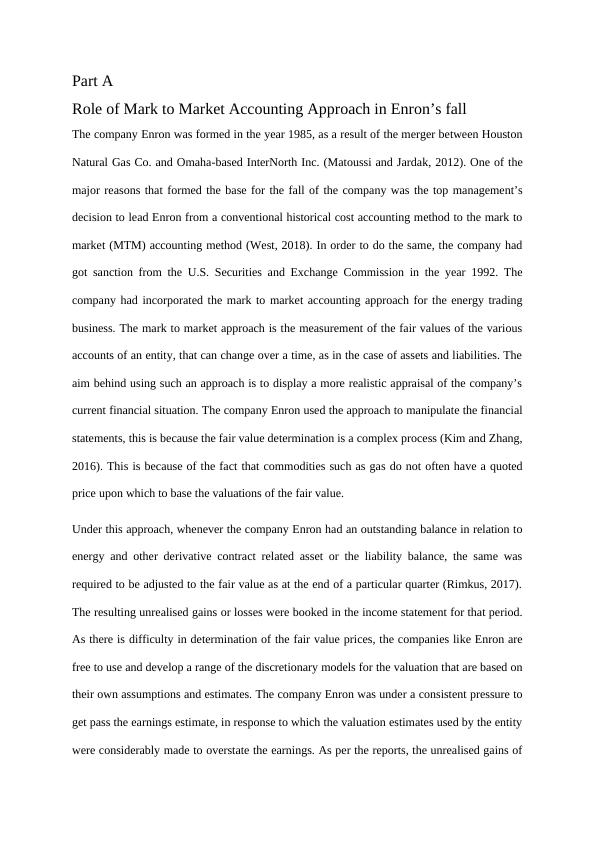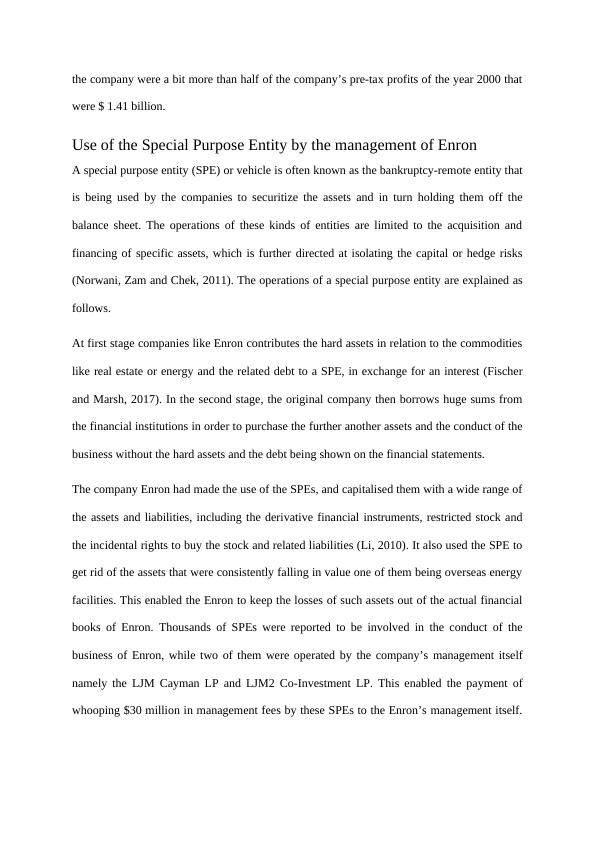Role of Mark to Market Accounting Approach in Enron’s fall
Added on 2023-06-07
10 Pages2630 Words138 Views
End of preview
Want to access all the pages? Upload your documents or become a member.
Mark to Market Accounting Approach and its role in the fall of Enron
|9
|2686
|121
Mark to Market Accounting Approach and its Role in the Fall of Enron
|9
|2686
|18
Mark to Market Approach and Special Purpose Entities: Lessons from Enron and Walmart's Financial Statement Measurement Methodologies
|8
|2371
|390
Measurement Methodologies of Walmart and Tesco Plc
|14
|2929
|196
The Fall of Enron and Methods of Valuing Assets and Liabilities
|8
|2391
|187
Fall of Enron Case Study: Issues and Explanations
|10
|2548
|361


